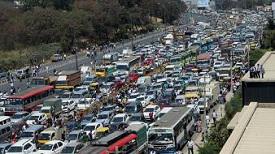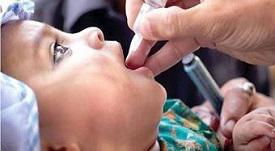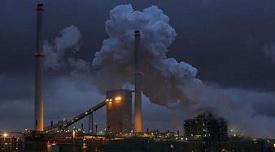Current Affairs November 2018 - Reports
1 - India ranked 12th globally in web-borne threats

According to a new report published by Russia-based global cybersecurity firm Kaspersky Lab, India ranked 12th globally when it comes to the dangers associated with surfing the web. As per the report, about a third of internet users in India were attacked by web-borne threats between the July-September period of this year.
General Manager of Kaspersky Lab South Asia, Shrenik Bhayani says, “It is known that money is the main motivation behind a cyberattack, and India being one of the largest and developing populations cannot afford to be vulnerable online. We need to be more aware and more secure online.
2 - ‘India ascended to 23 places in the ‘Ease of Doing Business’ ranking by World Bank

The report released by World Bank said that India has moved up to 23 places to the 77th position in the (World Bank’s) ‘ease of doing business’ ranking. Last year, India was ranked 100th in World Bank’s Ease of Doing Business Report, moving up from 131th position that it recorded in 2016.
However, US-based think-tank Centre for Global Development (CDG) noted that, much of India’s rise in 2017 came as a result of methodological changes carried out by the World Bank. In the ‘Doing Business’ 2019 report, the World Bank has also confirmed India improved on six of the 10 parameters relating to starting and doing business in a country.
The parameters included in preparing such report are ease of starting a business, construction permits, getting electricity, getting credit, paying taxes, trade across borders, enforcing contracts and resolving insolvency.
3 - Bengaluru tops the most congested city report

As per the recent research report prepared by the US-based organization, the National Bureau of Economic Research (NBER), in the list of top 20, Bengaluru is ranked first, followed by Mumbai (2nd), Delhi (3rd), Chennai (4th), and Kolkata (5th); Bhopal being the last.
The list was named as ‘Mobility & Congestion in Urban India” and contains top 20 cities.
The Bureau also prepared top 20 slowest cities in terms of traffic speed where Kolkata stood first followed by Bengaluru, Hyderabad, and Mumbai.
However, for the complete list, check out the following table:
| Sr.No. |
20 Most Congested Cities |
20 Slowest Cities (Traffic Speed) |
10 Fastest Cities (Traffic Speed) |
| 1 |
Bengaluru |
Kolkata |
Ranipet |
| 2 |
Mumbai |
Bengaluru |
Srinagar |
| 3 |
Delhi |
Hyderabad |
Kayamkulam |
| 4 |
Chennai |
Mumbai |
Jammu |
| 5 |
Kolkata |
Varanasi |
Thrissur |
| 6 |
Hyderabad |
Patna |
Palakkad |
| 7 |
Pune |
Delhi |
Chandigarh |
| 8 |
Jaipur |
Bhagalpur |
Alwar |
| 9 |
Coimbatore |
Bihar Sharif |
Thoothukkudi |
| 10 |
Ahmedabad |
Chennai |
Panipat |
| 11 |
Patna |
Muzaffarpur |
|
| 12 |
Chandigarh |
Aligarh |
|
| 13 |
Kochi |
Darbhanga |
|
| 14 |
Thiruvananthapuram |
English Bazar (West Bengal) |
|
| 15 |
Begusarai |
Gaya |
|
| 16 |
Kozhikode |
Prayagraj (Allahabad) |
|
| 17 |
Nagpur |
Ranchi |
|
| 18 |
Ranchi |
Dhanbad |
|
| 19 |
Vijayawada |
Akola |
|
| 20 |
Bhopal |
Pune |
|
4 - Pneumonia & diarrhea progress report 2018

As per the research report published by Johns Hopkins Bloomberg School of Public Health, girls under the age of five in rural and poorer urban localities continue to lose out on vaccinations. The data shows that there is gender gap, as the appearance of boys under five is greater than the number of girls under five for vaccination.
Furthermore, as per the report, India's vaccination scheme is designed to prevent rotavirus infection, which is a leading cause of severe diarrhoea in young children, and was the lowest among 15 countries. It also pointed out that India lost over 2.6 lakh children under five years from pneumonia and diarrhoea in 2016.
The report concluded that the health systems falling "woefully short" in ensuring that the most vulnerable children have access to prevention and treatment services in the 15 countries including India, that account for 70 per cent of global pneumonia and diarrhoea deaths in children under the age of five.
5 - BhubaneswarMe Wi-Fi launched

Naveen Patnaik, the Chief Minister of Odisha has launched the City Wide Wi-Fi Project, which is titled as “BhubaneswarMe Wi-Fi’’ by the Bhubaneswar Smart City Limited (BSCL). This service is available across the city.
On the launching day, 100 hotspots with 275 Access Points (APs) went live. These hotspots are located in major locations between KIIT Square to Governor House, Acharya Vihar to AG Square, Sishu Bhawan to Vani Vihar, and Nalco Square to Acharya Vihar. The capacity of one Wi-Fi hotspot is to handle about 150 users at a given point in time and the speed will be 2 Mega Bytes per Second (MBPS). In a day, 250 MB free data will be given to any user who registers on it.
The Phase-I was launched with 100 hotspots (Wi-Fi networks). Phase II would add 100 more locations; and in the Phase-III, total 518 hotspots would be set up across the city to complete the City Wide Wi-Fi Network. Likewise, with all three phases, the city will have 1,800 APs.
6 - Iceland - the safest place to visit

As per a report, Iceland is the safest place for a holiday, followed by UAE, Singapore, Spain, Australia, and Canada.
The researchers have collected specific data from different reliable sources such as analyzed crime statistics from the World Economic Fund, natural disaster risk assessments from the World Risk Report, health risk data from the NHS Fit for Travel site and terrorism risk levels from the Foreign Office and finally prepared the list of safest places to go on a holiday.
Iceland ranked at the top because of 'extremely' low rate of crime and it has one of the lowest probabilities of a natural disaster.
UAE ranked second because of having popular destination, Dubai and having low risk of crime and disaster, but there is (likely) terrorist attack i.e. with least chance.
Singapore ranked third; however, researchers have noted that it has a moderate risk of zika virus.
Spain ranked at fourth and Australia at fifth.
7 - India to overtake US to be 2nd largest carbon emitter

As per the report published by the International Energy Agency (IEA) in World Energy Outlook, soon India will overtake the US to become the world’s second-biggest emitter of carbon dioxide from the power sector most likely before 2030. This is because of the very high demand of electricity in India.
The Paris based agency IEA says that carbon dioxide emissions from India’s power sector are expected to rise closely by 80 percent by 2040 as power use almost triples, driven in part by air conditioning; however, China will remain the biggest emitter.
Surprisingly, in spite of having high power demand and emissions, India’s per-capita electricity consumption will remain one of the world’s lowest.









